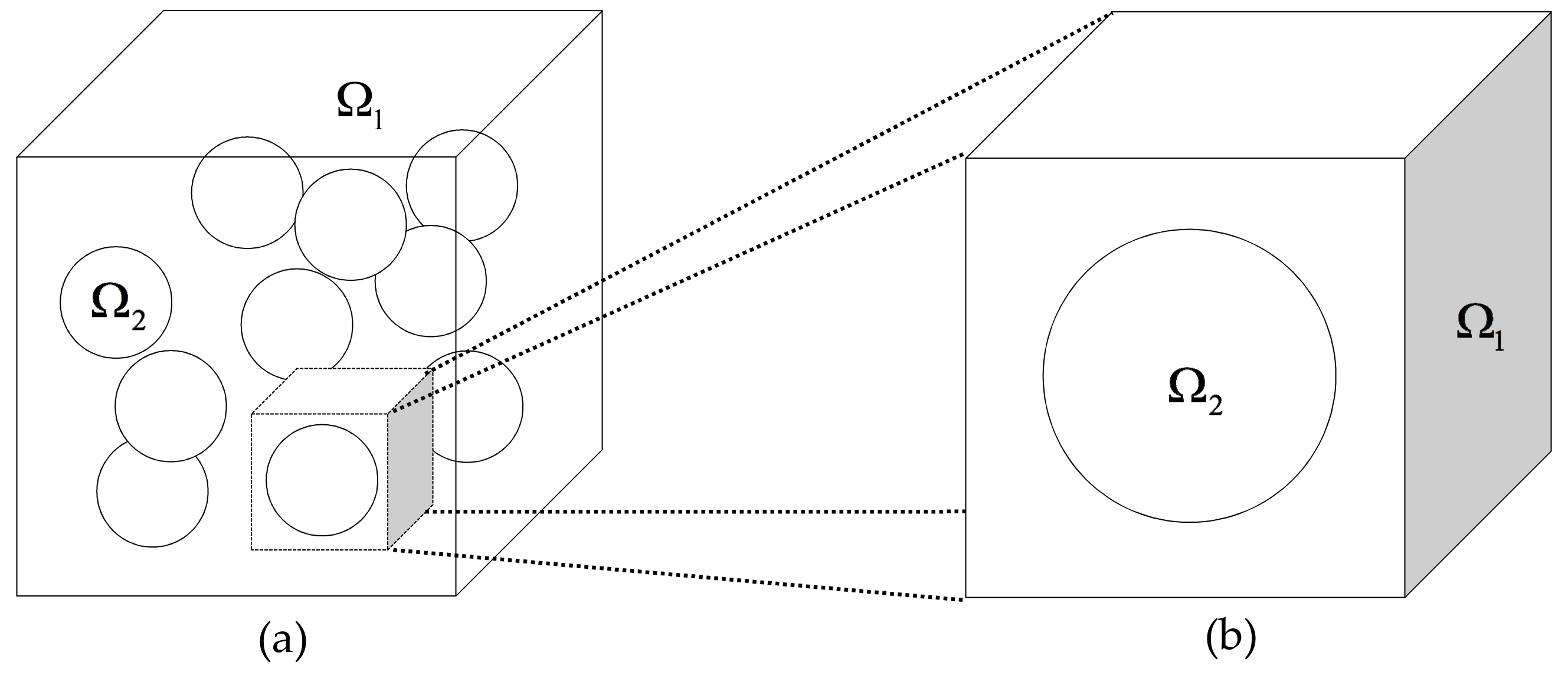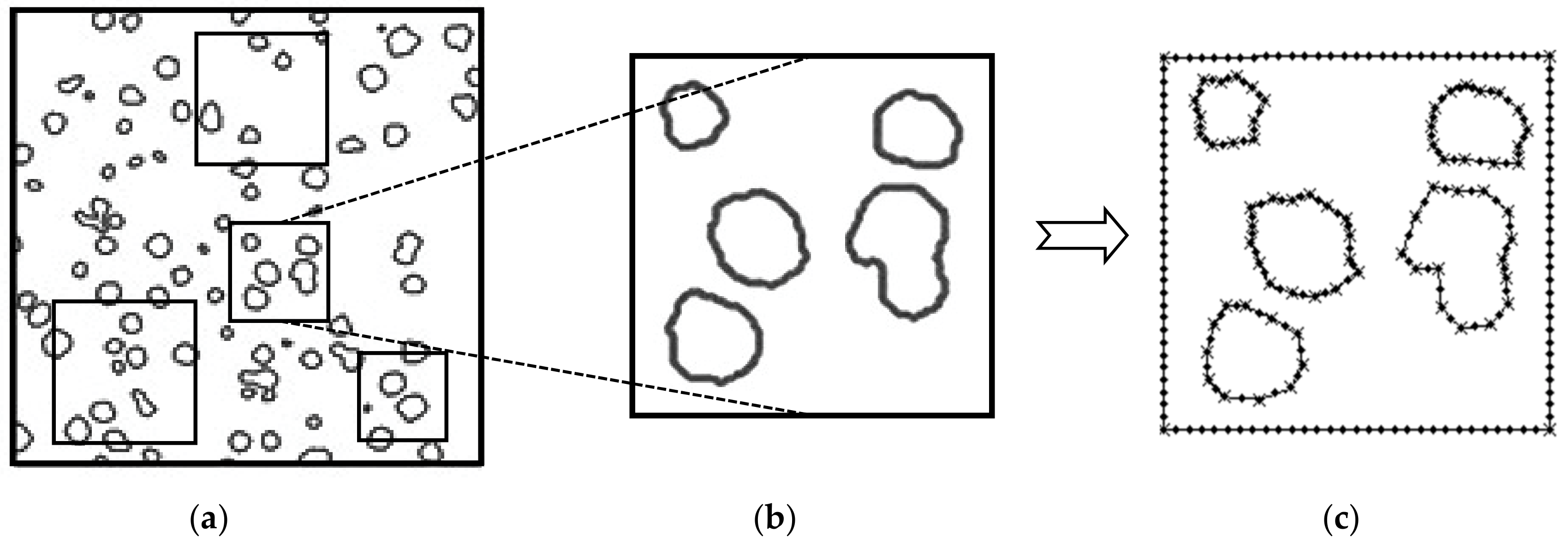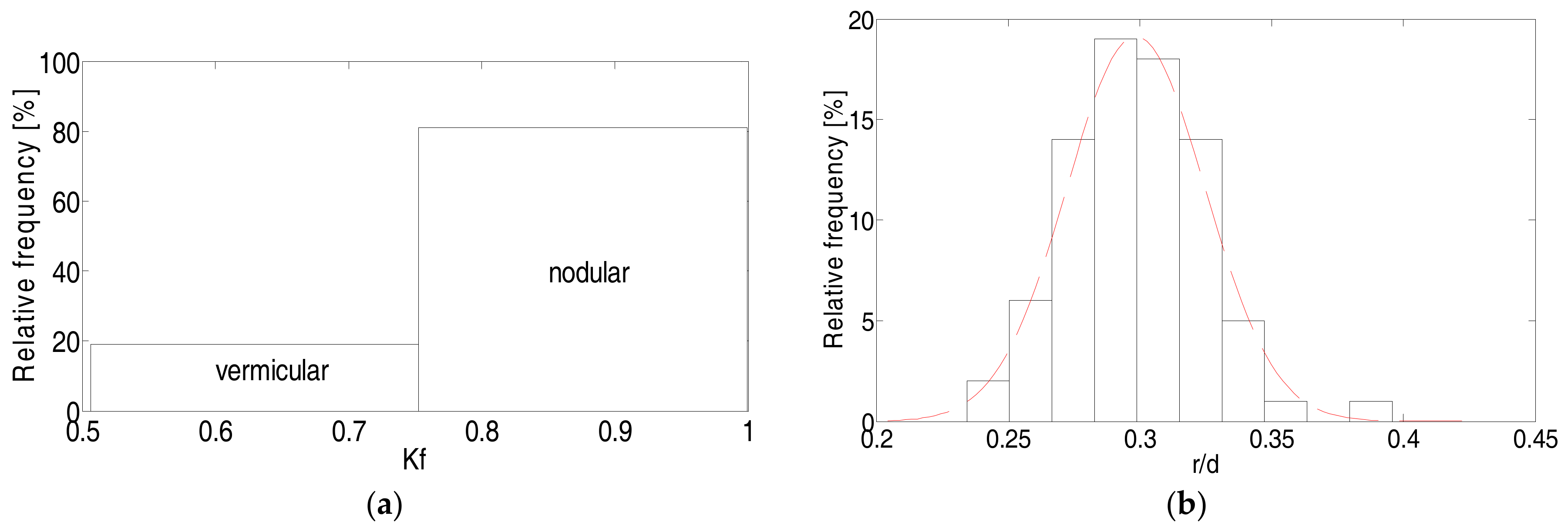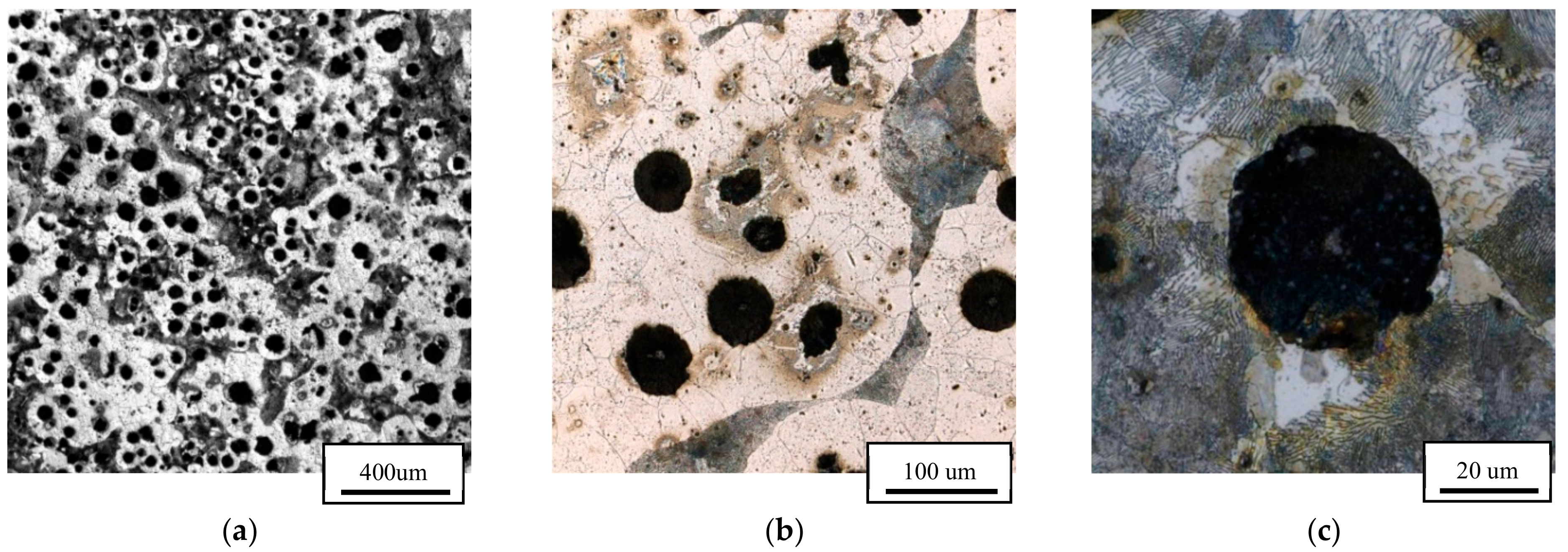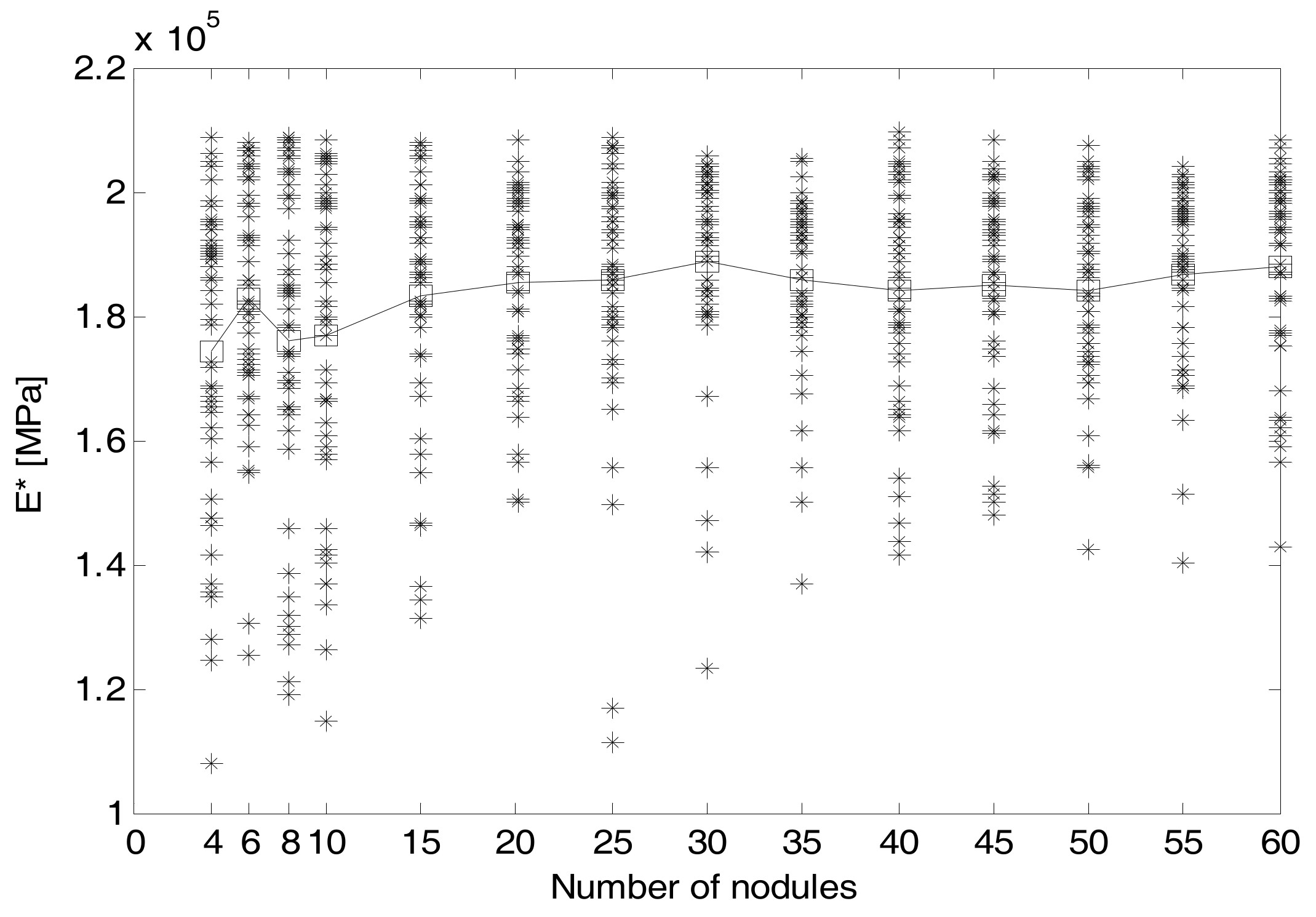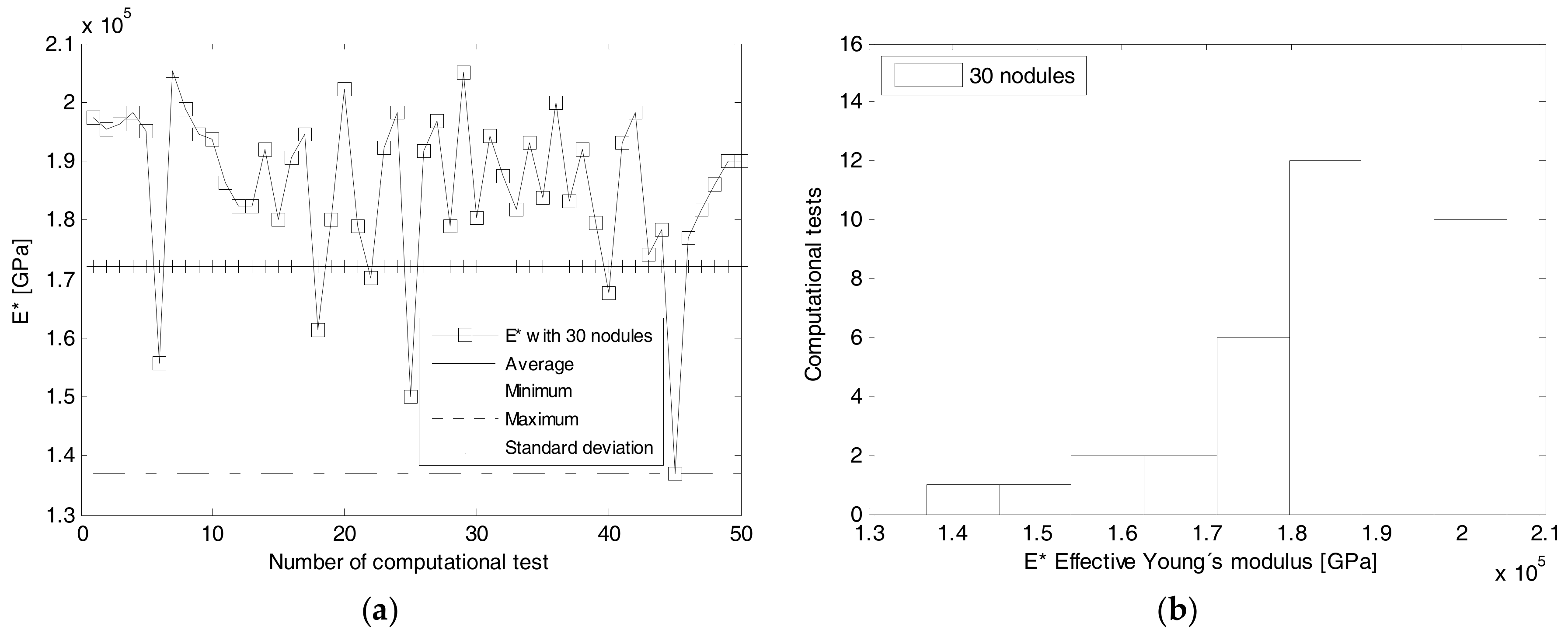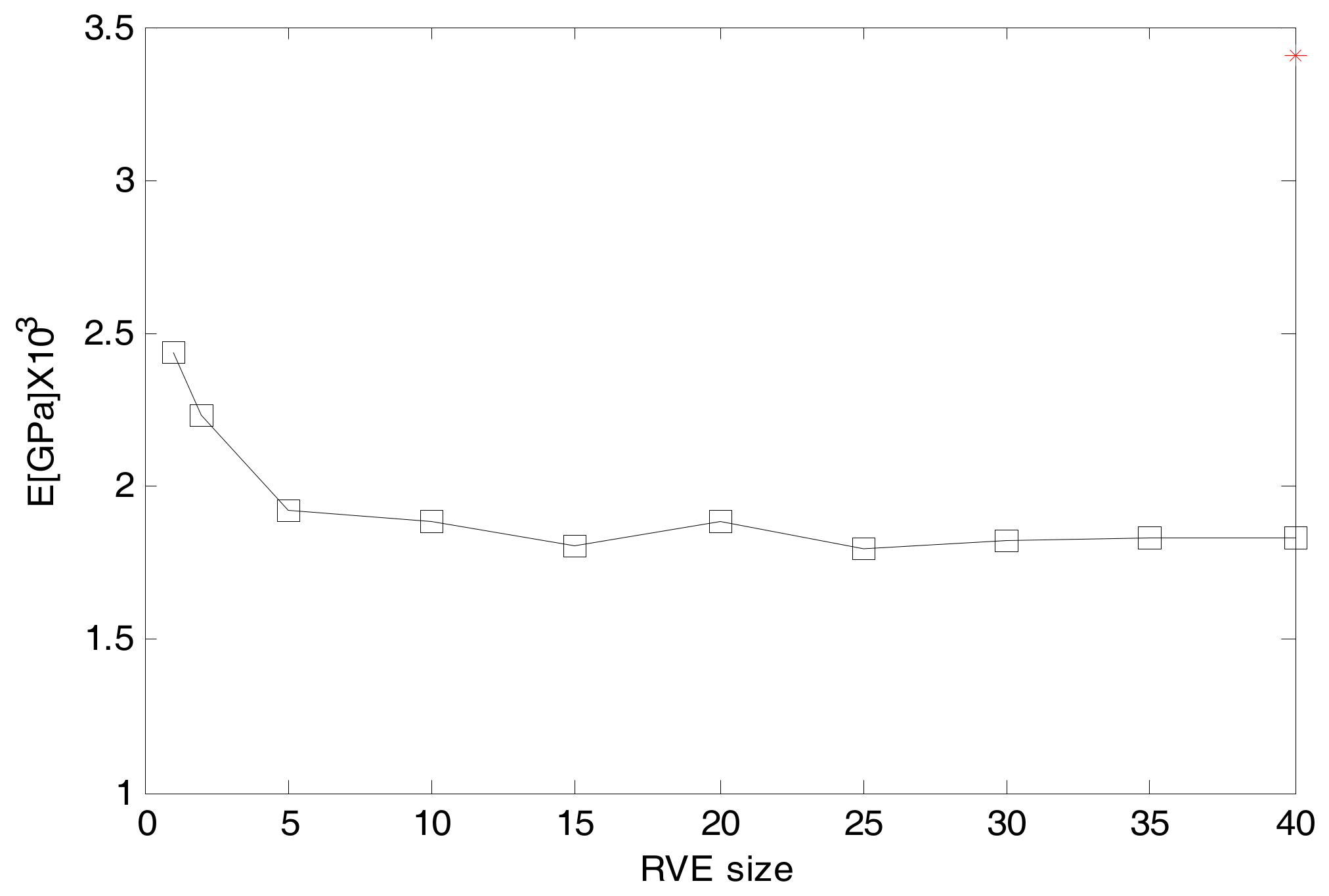1. Introduction
The multiscale homogenization procedure for microstructural material is an important topic in the science and engineering of materials. According to Nguyen et al. [
1], computer modeling is the most efficient technique for this purpose, and it has been a subject of interest in recent years. One of the main challenges for multiscale modeling is in developing numerical models that predict the behavior of microstructures with high accuracy and efficiency. Many works on this subject have been developed over the years [
2,
3,
4,
5]. According to Pundale et al. [
6], microstructural materials are considered to be composites for the numerical modeling approach, where the challenge relies on coupling the individual behavior of each constituent to obtain an overall response.
Achenbach and Zhu [
7,
8] carried out numerical studies with multiphase media using a unit cell model to study the variation of the interface parameters and to estimate the effect of distribution of stresses in both the matrix and in the fibers. Moorthy and Ghosh [
9] developed a finite element (FE) model in conjunction with Voronoi cells to examine the small deformation of arbitrary heterogeneous material in a 2D model. The influences of the shape, size, orientation, and distribution of inclusions on the micro- and macroscopic responses were also investigated. The results indicated that the orientation of every grain did not play as important a role as the size of the inclusions in the response of the overall properties.
Effective properties of macrostructural materials using synthetic geometries (i.e., regular geometries such as cylinders, spheres, and ellipsoids) of different sizes and different mechanical properties were studied by Yao et al. [
10], who used a 2D formulation in the boundary element method (BEM) to demonstrate that the BEM formulation may be more suitable for interface analysis when compared to the FE method. Using the following two approaches, Zheng et al. [
11] studied a solid whose macrostructure comprised fluid-filled pores: the superposition method and a multi-subdomain method 2D BEM model using subregions. It was shown that the multi-subdomain method (with subregions) was more efficient and accurate for determining the effective properties. Gitman et al. [
12] discussed the periodicity of the material, and they established the no-wall-effect concept, which refers to the inability of inclusions to penetrate through the sample borders within a representative volume element (RVE). According to Gitman [
12], the periodicity of a material considers that a material experiencing no-wall effects due to the RVE is a representative volume and should, therefore, represent any part of the material. Despite the many experimental and computational methods devoted to the study of the effective elastic modules of nodular cast iron (NCI) [
6,
13,
14,
15], it is important to highlight that computational methods are much more attractive from the point of view of saving time and reducing the operational costs.
Numerical homogenization was used based on the concept of the RVE for determining the effective properties. Through this method, the statistical data of many RVEs can be obtained, and by averaging the values of each distribution of spherical inclusions, it is possible to find the global response of the material [
16]. According to Zohdi [
16], this technique is more trustworthy than performing individual direct simulations. Buroni and Marczak [
13] developed a homogenization procedure using a 2D BEM as a numerical approach to determine the effective modulus of NCI. In this work, the inclusions were considered to be voids, which were discretized with a single special hole element. This new numerical approach demonstrated good accuracy and low computational cost. Carazo et al. [
17] performed an RVE study to determine the effective properties of NCI. The authors imposed rectangular and hexagonal geometric shapes of the RVE; the numerical results were compared to analytical expressions, and the authors concluded that the graphite fraction has the largest influence on the effective modulus. They realized that the effective properties are independent of the RVE shape. Fernandino et al. [
15] recently used the FE method and a multiscale analysis to determine the effective elastic proprieties of NCI where a complete experimental characterization was introduced and used to evaluate the numerical results.
In this paper, the main objective is to develop a homogenization process for NCI. Nodular cast iron, also known as spheroidal graphite cast iron (SGI), was chosen to develop a numerical model of homogenization. The main reason is the morphology of the microstructure, which contains nearly spherical inclusions of graphite embedded in a homogeneous ferritic matrix. The nodular graphite has a high carbon content, while the matrix medium has a ferritic, pearlitic, ferritic-pearlitic, or austenitic structure [
18]. For the numerical homogenization process, two approaches were employed: the first one models the nodules as a synthetic geometry, and the second one models them as their real shapes obtained via microtomography. A numerical routine using the BEM for the homogenization analysis was supported by experimental studies, such as microtomography by X-rays (micro-CT), tensile tests, hardness tests, microhardness tests, micrographic analyses, and scanning electron microscopy equipped with energy-dispersive X-ray (SEM-EDX) analyses. The main goal of this investigation is to determine the influence on the effective properties obtained when considering the nodules as synthetic and real geometries in the homogenization process.
